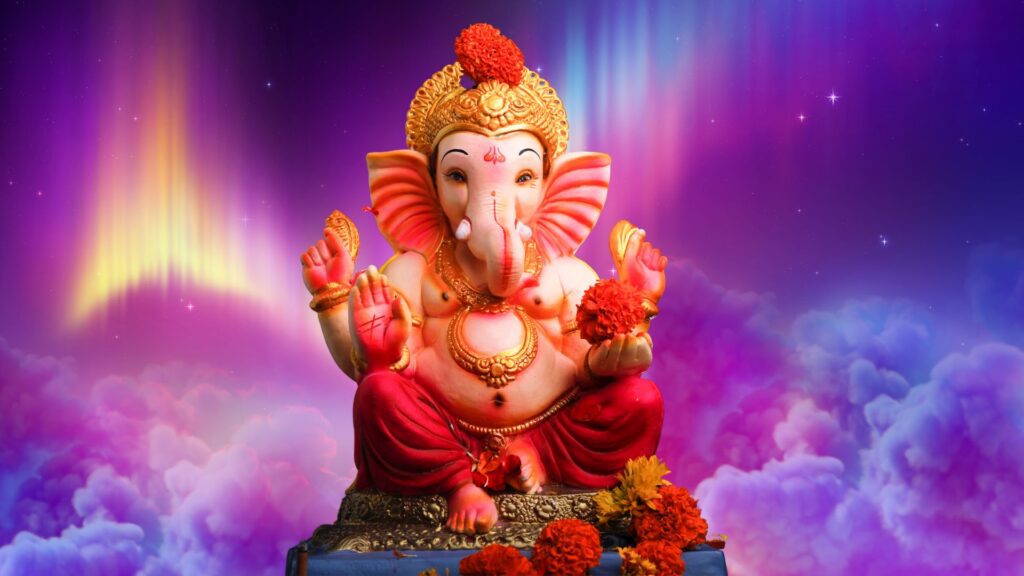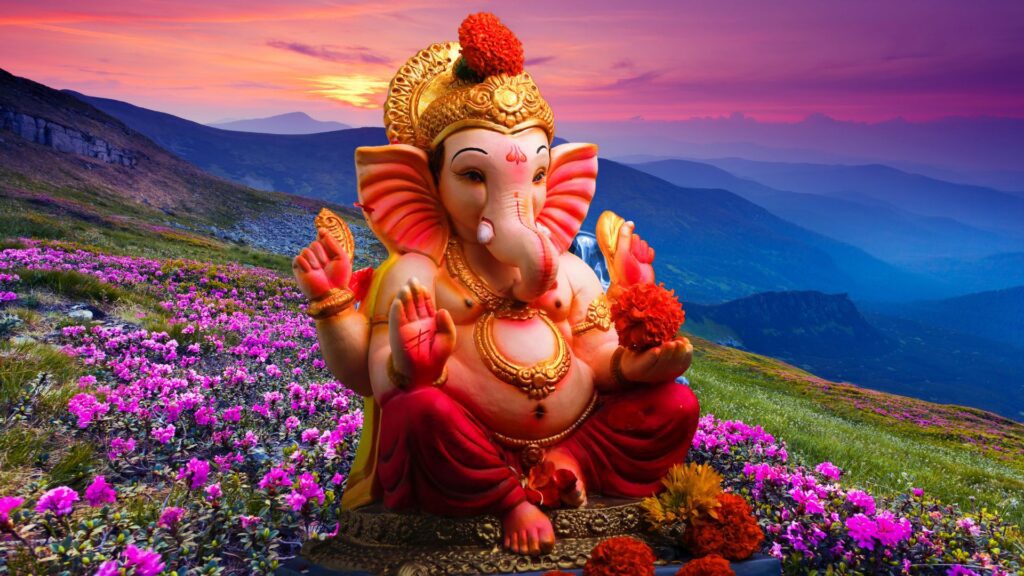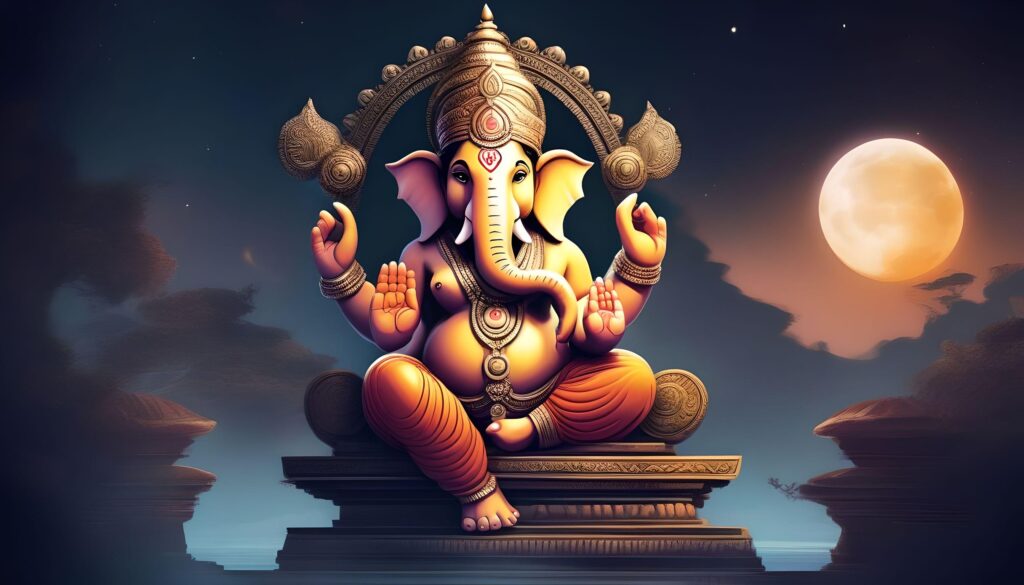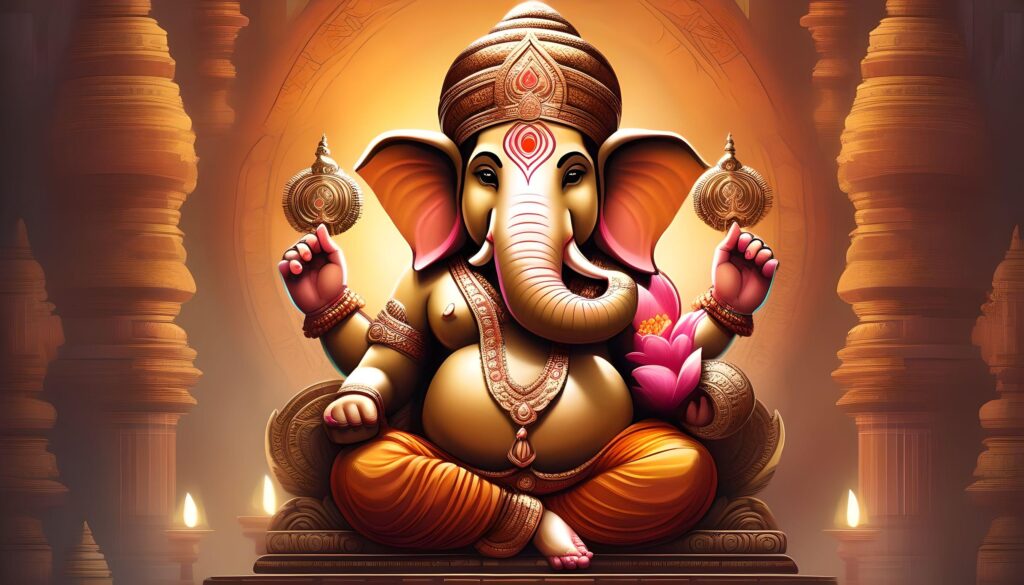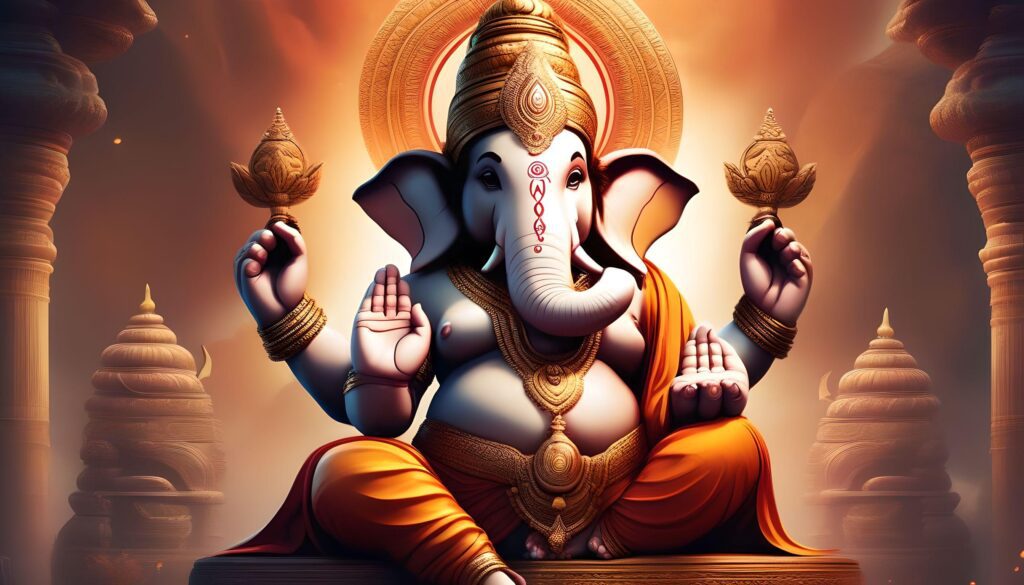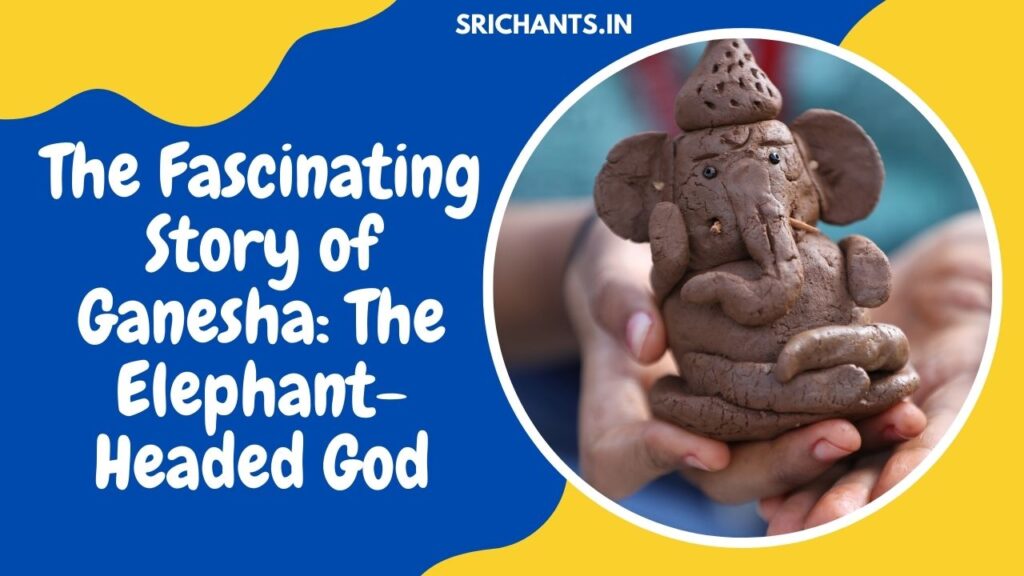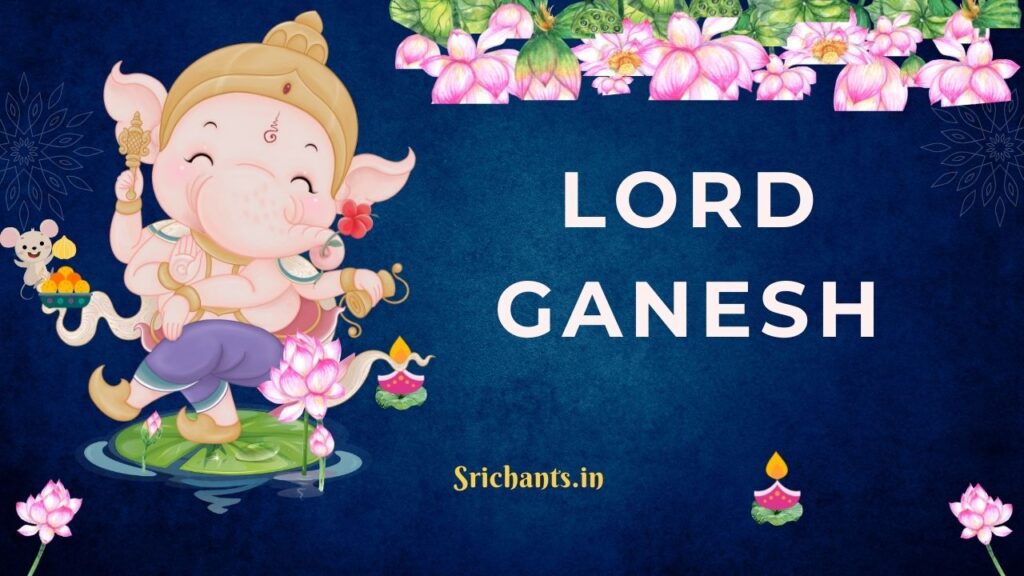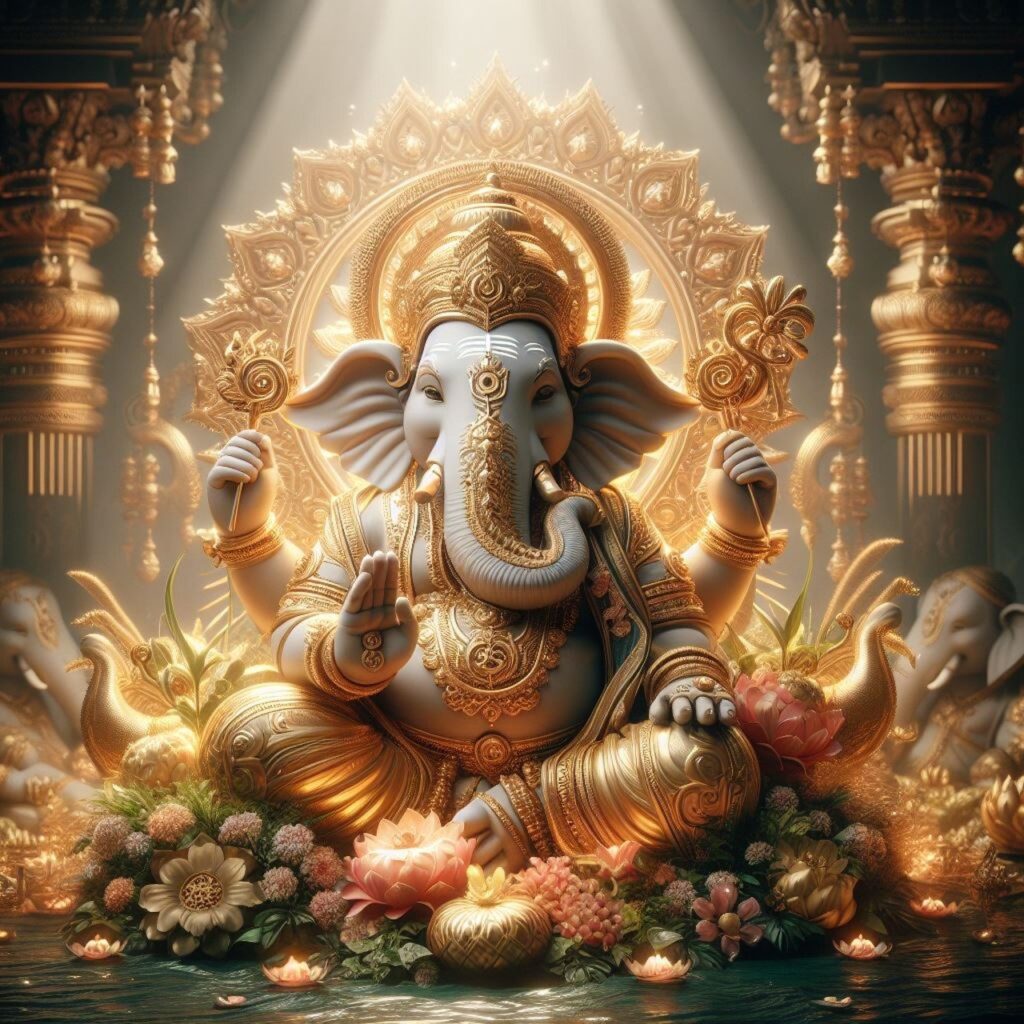The Myth and Symbolism of Ganesha in Art and Literature
Introduction
Ganapati, an alternative name for Ganesha, occupies a prominent position within the religions of Jainism, Buddhism, and Hinduism. By virtue of being frequently portrayed with an elephant’s head and a human body, this esteemed deity symbolizes the union of the material and spiritual realms. Ganesha is said to be linked with intelligence, sagacity, and the capacity to surmount challenges. This article will examine the historical representations of Ganesha in literature and art, delving into her myth and symbolism.
The Birth and Childhood of Ganesha
The origin of Ganesha, the progeny of Shiva and Parvati, is a captivating narrative. Parvati, according to Hindu mythology, fashioned Ganesha from clay and imbued him with life. Shiva was, by sheer chance, engaged in contemplative wanderings during the time that Parvati made the decision to bathe. Ganesha was designated by her as a sentry to be stationed outside her chamber.
Nevertheless, upon Shiva’s return, he was taken aback to discover a young ladder who claimed to be Parvati’s son. Shiva, enraged, commanded his band of demons, the “bhutaganas,” to launch an assault on Ganesha. Ganesha, to their great amazement, defeated them all with ease. Parvati hurriedly exited the room amid the disorder and reprimanded Shiva for his impulsive behavior. Shiva, having come to his senses, revived Ganesha by substituting the severed head with that of an elephant, thereby distinguishing him as the preeminent deity among the Hindu pantheon.
The childhood of Ganesha is replete with captivating anecdotes and exploits. A competition between Ganesha and his sibling, Karthikeya, to see who could wed first is one such story. Karthikeya mounted his blue peacock and initiated a brisk circumnavigation of the globe in an attempt to secure victory in the race. On the contrary, Ganesha adopted a more relaxed stance. He performed the symbolic act of encircling the globe seven times by embracing his parents seven times. Ganesha obtained triumph through his astuteness and unorthodox approaches. In matrimony to Buddhi (Success) and Siddhi (Wisdom), daughters of Prajapati, he was blessed with two sons: Kshema and Laabha.
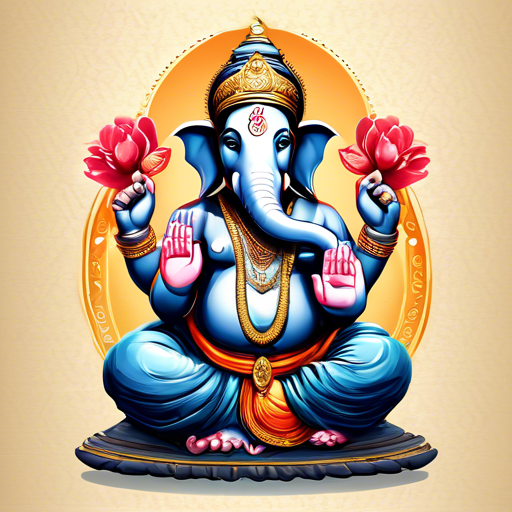
Ganesha in Art
Over the course of history, Ganesha has consistently garnered considerable artistic attention. Ganesha is frequently depicted in Hindu art bearing an elephant’s cranium and a corpulent human physique. An assortment of symbolic items, such as a fractured tusk, an axe, a ladle, a noose, prayer beads, and a tray of sweets, are held in his hands. These artifacts possess substantial importance and symbolize Ganesha’s affiliation with sagacity, intellect, and surmounting challenges.
The depiction of Ganesha in artistic works may differ in accordance with particular cultural and traditional practices. For instance, while the symbols and aesthetics of depictions in Javanese, Cambodian, and Indian cultures may vary, the fundamental attributes of a deity with an elephant’s head remain unchanged. Kroncha, a gigantic rodent renowned for its dexterity, is frequently portrayed as Ganesha atop his mount; this image symbolizes Ganesha’s capacity to traverse and surmount the obstacles of existence.
Ganesha in Literature
The influence of Ganesha extends beyond the realm of visual art and is also substantial in the realm of literature. The 1960s-created children’s book series Amar Chitra Katha, which aimed to educate readers about Indian mythology and history, is a notable example. These comics are influenced by Hindu epics and feature Ganesha as the primary figure, frequently emphasizing his sagacity, intellect, and function in surmounting challenges.
The literary representation of Ganesha transcends children’s literature. Numerous ancient texts, including the Ramayana and the Mahabharata, contain tales involving Ganesha. It is widely speculated that Ganesha transcribed the epic poem Mahabharata in the manner in which the sage Vyasa dictated it. Due to her profound connection with writing and intellectual endeavors, Ganesha has been bestowed with the patronage of academicians, students, and writers.
The Symbolism of Ganesha
The symbolism of Ganesha comprises an extensive array of qualities and attributes. To ensure the success of new undertakings, Ganesha is frequently invoked at their inception, in her capacity as the remover of obstacles. The divine persona’s universal appeal is evident in his prominence within Hinduism, Jainism, and Buddhism, where he is revered as a protector and guide on spiritual excursions.
The shattered tusk of Ganesha is an additional noteworthy emblem that is linked to him. It symbolizes fortitude and the capacity to adjust in the face of adversity. One possible interpretation holds that Ganesha severed his tusk in order to transcribe the Mahabharata, thus exemplifying his dedication to the posterity of knowledge and wisdom.
It is worth noting Ganesha’s correlation with temporality and transformation. According to Hinduism, the current epoch is known as the “Kali Yuga,” or the era of darkness. Being the deity associated with this era, Kali symbolizes the perpetual change and evolution that defines our being. His role as the deity of time and change is reflected in Ganesha’s relationship with Kali, which emphasizes the transient nature of everything and the necessity to adapt and develop.

Ganesha in Contemporary Art
Ganesha remains an international source of inspiration for contemporary artists. One such artist is Chitra Ganesh, a Brooklyn-based artist of Indian descent. Ganesh incorporates aspects of Hinduism, Buddhism, and Greek mythology into her work, despite the fact that she is not devout. Through her digital collages, paintings, and murals, she investigates female strength, myth, and subjective experiences. In addition to challenging conventional narratives, Ganesh’s artwork provides a forum for untold tales and marginalized figures.
In a contemporary context, Ganesh’s artwork frequently alludes to the visual language of comic strips and the Amar Chitra Katha. Through the integration of popular culture and folklore elements, Ganesh revitalizes conventional myths and symbols that have long been linked to the deity.
Conclusion
For centuries, the mysticism and symbolism surrounding Ganesha have engrossed artists and writers. Ganesha’s prevalence in literature and art, spanning from contemporary digital collages and comics, signifies his enduring allure as a goddess associated with intelligence, sagacity, and triumph over challenges. Ganesha, whether embodied in abstract forms or crowned with an elephant head, remains a source of inspiration and guidance for individuals as they navigate their spiritual and creative quests.
An examination of the narratives and emblems associated with Ganesha provides valuable understanding of the profound cultural legacy of Hinduism and its profound impact on the realms of literature and art. Drawing inspiration and imparting valuable lessons regarding how to overcome life’s challenges, Ganesha’s myth appeals to individuals from diverse backgrounds due to his association with time and transformation, his birth, and his juvenile exploits. By further examining the varied depictions of Ganesha in literature and art, our comprehension of this venerated being and the far-reaching influence he has wielded over the course of history is enhanced.

